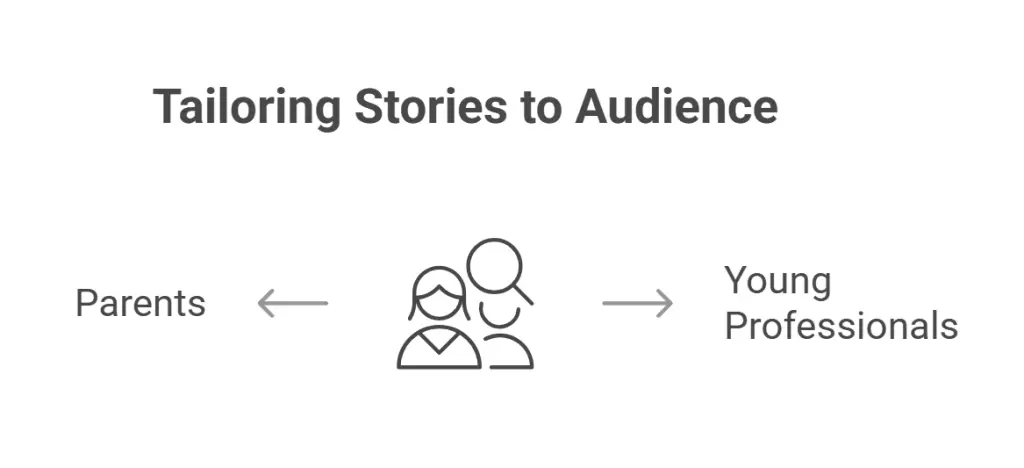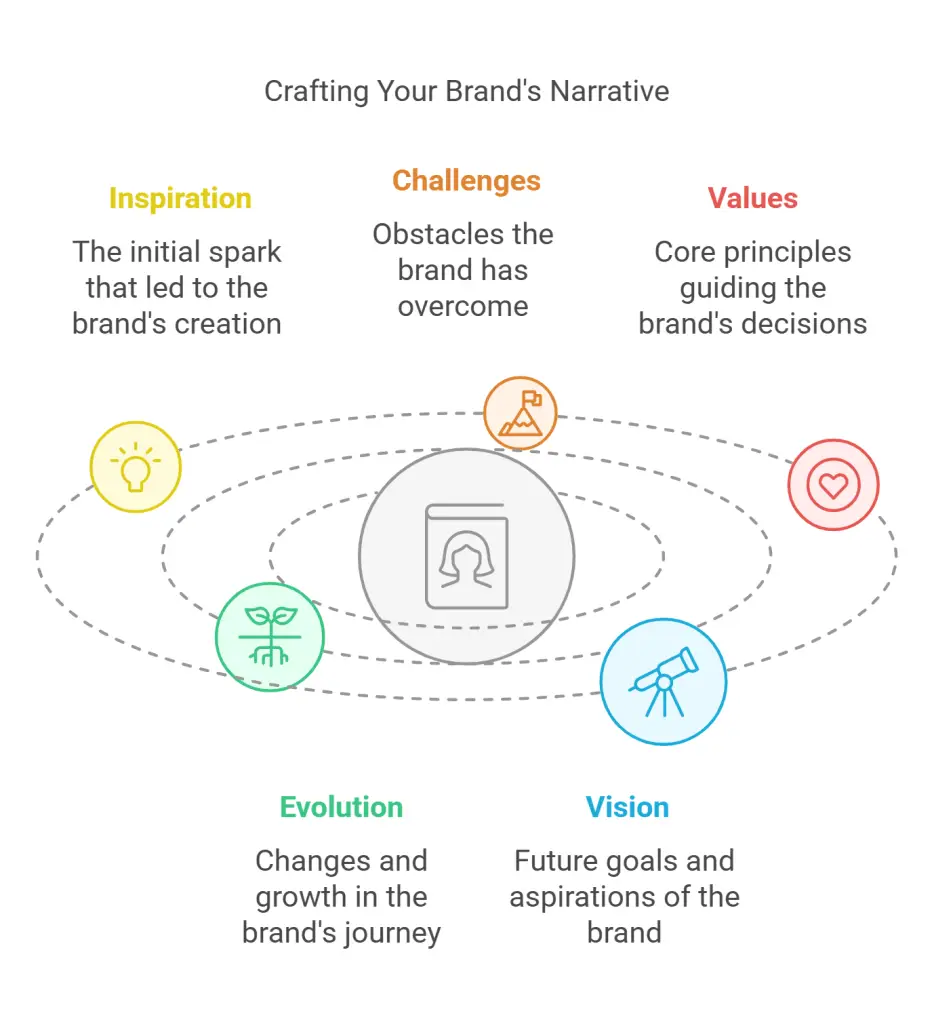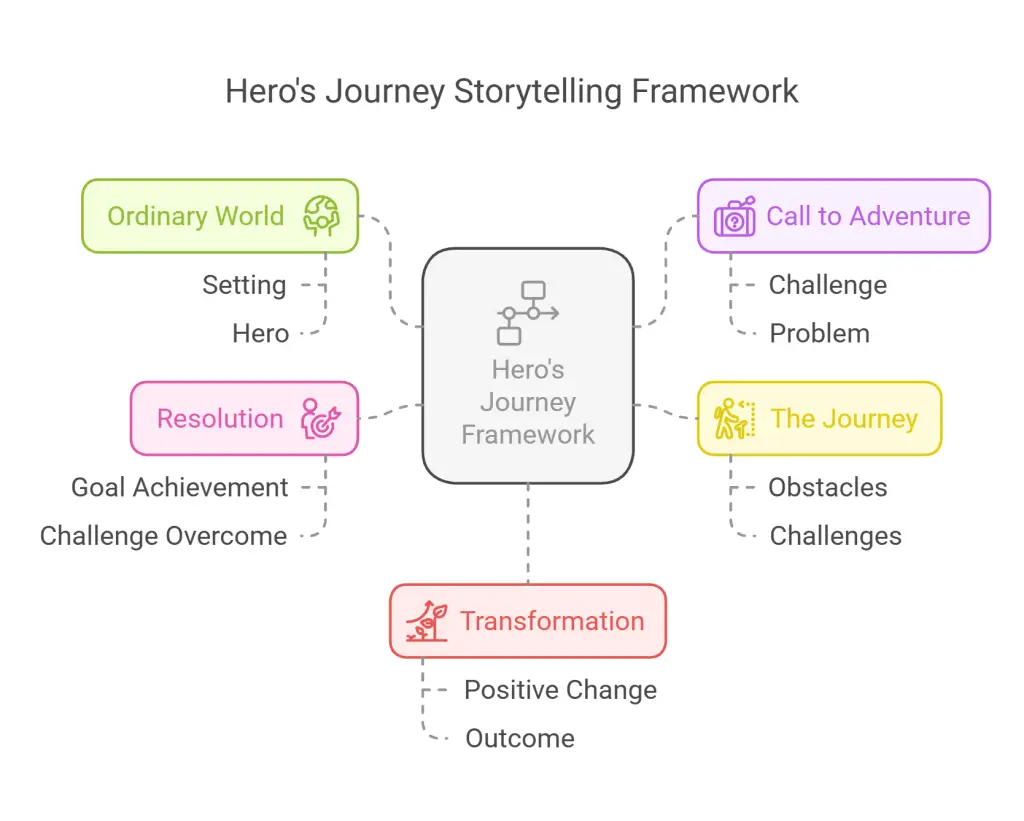Storytelling has always been a fundamental aspect of human communication. From the earliest cave paintings to the latest blockbuster movies, stories have been used to share knowledge, preserve culture, and convey values. In today’s digital world, storytelling has found a new platform: social media. With billions of users across various platforms, social media offers a unique opportunity for brands to share their stories with a global audience. But why is storytelling so effective in social media marketing, and how can businesses harness its power to enhance their brand identity and build stronger connections with their audience?
This blog post will delve into the power of storytelling in social media marketing, offering insights into why it works, how to craft compelling stories, and real-world examples of brands that have mastered this art. Additionally, we’ll explore the tools and techniques you can use to enhance your storytelling, discuss potential challenges, and provide solutions to help you tell your brand’s story effectively across different platforms.
Why Storytelling Works in Social Media Marketing
The Psychological Impact of Stories
Human brains are hardwired for stories. Neuroscientific research has shown that stories can activate multiple areas of the brain, including those responsible for sensory experiences, emotions, and memories. When people engage with a story, their brains release oxytocin, a hormone that promotes empathy and social bonding. This is why stories are so powerful—they don’t just inform us; they connect us on a deeper emotional level.
In social media marketing, the ability to evoke emotions is crucial. Users are bombarded with content every time they log in, and the posts that stand out are those that resonate emotionally. A well-crafted story can create a lasting impression, making your brand more memorable and fostering a stronger connection with your audience.
Stories Humanize Brands
In the vast digital landscape, where consumers are constantly exposed to advertisements and promotional content, it’s easy for brands to come across as impersonal and distant. Storytelling humanizes your brand by showcasing the people, values, and mission behind it. Instead of being just another company selling a product, your brand becomes a relatable entity with a story that consumers can connect with.
For instance, a company that sells outdoor gear might share stories about its employees’ adventures in nature, highlighting their passion for the outdoors. This not only makes the brand more relatable but also reinforces its identity and values. When consumers see the people behind the brand and understand the passion that drives them, they are more likely to feel a connection and trust the brand.
Stories Simplify Complex Messages
One of the key challenges in marketing is conveying complex information in a way that is easy to understand and engaging. Stories are an excellent way to simplify complex messages because they break down information into a narrative that is easier to follow. By framing your message within a story, you can make it more accessible and relatable to your audience.
For example, if your company provides a technical service, you could share a story about a customer who faced a specific challenge and how your service helped them overcome it. This not only explains what your service does but also demonstrates its value in a real-world context.

How to Craft Compelling Stories for Social Media
Crafting a compelling story for social media requires a deep understanding of your audience, a clear definition of your brand’s narrative, and the ability to present your story in an engaging format. Here’s how you can achieve this:
Know Your Audience
Understanding your audience is the foundation of effective storytelling. To create stories that resonate, you need to know who your audience is, what they care about, and what challenges they face. Conducting audience research through surveys, social media analytics, and customer feedback can provide valuable insights into their preferences and pain points.
Once you have a clear understanding of your audience, you can tailor your stories to address their needs and interests. For instance, if your audience consists of young professionals, you might focus on stories that highlight career growth and work-life balance. On the other hand, if your audience is primarily parents, your stories might center around family-oriented themes.

Define Your Brand’s Story
Every brand has a unique story, and defining this narrative is crucial to crafting compelling social media content. Your brand’s story should reflect your values, mission, and the problem you solve for your customers. It should also be authentic and consistent across all platforms.
To define your brand’s story, start by answering the following questions:
- What inspired the creation of your brand?
- What challenges have you faced and overcome?
- What values guide your business decisions?
- How has your brand evolved over time?
- What is your vision for the future?
These questions will help you craft a narrative that encapsulates your brand’s journey and mission. Once defined, this narrative will serve as the foundation for all your social media storytelling efforts.

Use a Storytelling Framework
Using a storytelling framework can help ensure that your stories are cohesive, engaging, and easy to follow. One popular framework is the “Hero’s Journey,” which consists of several stages that guide the narrative:
- The Ordinary World: Introduce the setting and the hero (your brand or your customer).
- The Call to Adventure: Present a challenge or problem that needs to be solved.
- The Journey: Describe the hero’s journey to overcome the challenge, including any obstacles faced along the way.
- The Resolution: Show how the hero overcomes the challenge and achieves their goal.
- The Transformation: Highlight the positive change that occurs as a result of the hero’s journey.
This framework can be adapted to fit different types of stories, from customer success stories to the brand’s origin story. By following this structure, you can create narratives that are not only engaging but also emotionally resonant.

Make It Visual
Visual content is essential for effective storytelling on social media. Platforms like Instagram, Pinterest, and TikTok are built around visual content, but even text-based platforms like Twitter and LinkedIn benefit from the inclusion of images, videos, and infographics. Visuals help capture attention, convey emotions, and make your stories more memorable.
When creating visual content for your stories, consider the following tips:
- Use High-Quality Images and Videos: Ensure that your visuals are clear, professional, and align with your brand’s aesthetic.
- Incorporate User-Generated Content: Sharing photos and videos from your customers can add authenticity to your stories and foster a sense of community.
- Create Infographics: Infographics are a great way to present complex information in a visually appealing and easy-to-understand format.
- Leverage Video: Short videos, such as Instagram Stories or TikTok clips, can be particularly effective for storytelling, as they allow you to convey a lot of information in a dynamic format.

Be Authentic
Authenticity is key to successful storytelling on social media. Audiences today are savvy and can quickly spot inauthentic or overly promotional content. To build trust and engagement, your stories should reflect your brand’s true values and experiences.
Here are some ways to maintain authenticity in your storytelling:
- Be Transparent: Share both your successes and your challenges. Audiences appreciate honesty and are more likely to relate to a brand that is open about its journey.
- Use Real Voices: Incorporate quotes, testimonials, and stories from real customers, employees, or partners. This adds credibility and relatability to your stories.
- Stay True to Your Brand: Ensure that your stories align with your brand’s values and identity. Avoid trying to be something you’re not, as this can come across as disingenuous.

Mastering Storytelling
To further illustrate the power of storytelling in social media marketing, let’s explore two detailed fictional case studies: “EcoBrew” and “FitLife Nutrition.”
EcoBrew: An Eco-Friendly Coffee Shop’s Journey
The Brand
EcoBrew is a small coffee shop in an urban neighborhood, founded by Sarah, an environmental enthusiast passionate about sustainability. EcoBrew sources its coffee beans from fair-trade farms, uses compostable cups and packaging, and is committed to reducing waste in all its operations.

The Challenge
Despite its commitment to sustainability, EcoBrew struggled to attract customers in its early days. The neighborhood was home to numerous coffee shops, including well-known chains with large marketing budgets. Sarah needed to find a way to make EcoBrew stand out without breaking the bank on advertising.
The Storytelling Strategy
Sarah decided to use storytelling on social media to highlight EcoBrew’s unique value proposition. She began by defining EcoBrew’s brand story, focusing on themes of sustainability, community, and quality.
- The Ordinary World: Sarah posted regularly about the day-to-day operations of EcoBrew, showcasing the shop’s commitment to sustainability. She shared photos and videos of the composting process, reusable cup options, and the locally-sourced pastries served with the coffee.
- The Call to Adventure: Sarah created a series of posts discussing the environmental impact of the coffee industry, such as deforestation and waste. She posed a challenge to her followers: “How can we enjoy our daily coffee without harming the planet?”
- The Journey: Sarah shared the story of EcoBrew’s founding, including the obstacles she faced in sourcing ethical coffee and implementing zero-waste practices. She also posted stories from the coffee farmers, emphasizing the positive impact of fair trade on their communities.
- The Resolution: Sarah showcased the positive outcomes of EcoBrew’s efforts, such as waste reduction and the growing community of eco-conscious customers. She shared testimonials from customers who valued EcoBrew’s mission and high-quality coffee.
- The Transformation: Over time, EcoBrew became known as the go-to spot for environmentally-conscious coffee lovers. Sarah celebrated milestones like the shop’s first anniversary and the introduction of new sustainable products, always thanking her customers for their support.

The Outcome
Thanks to her storytelling efforts, Sarah built a loyal following for EcoBrew. The shop’s social media pages became a hub for discussions about sustainability and ethical consumption, further strengthening the community around the brand. Sales increased, and Sarah eventually opened a second location, successfully expanding her business.
FitLife Nutrition: Building a Health-Conscious Community
The Brand
FitLife Nutrition is a small business specializing in organic supplements and health products. Founded by fitness enthusiasts Mark and Lisa, FitLife aims to promote a healthy, balanced lifestyle through high-quality, natural products.

The Challenge
Despite offering top-notch products, FitLife struggled to compete with larger, well-established supplement brands. Mark and Lisa knew they needed to differentiate FitLife and create a strong connection with their target audience.
The Storytelling Strategy
Mark and Lisa decided to focus on storytelling to build a community of health-conscious individuals around their brand. They defined FitLife’s brand story as one of transformation, empowerment, and natural wellness.
- The Ordinary World: FitLife’s social media pages featured daily posts about healthy living, including tips on nutrition, exercise, and mental well-being. Mark and Lisa shared their personal fitness journeys, including the challenges they faced and how their products helped them achieve their goals.
- The Call to Adventure: They introduced their audience to the concept of natural wellness, emphasizing the importance of using clean, organic products for optimal health. They challenged their followers to “take the first step” toward a healthier lifestyle by trying FitLife’s products.
- The Journey: FitLife shared customer stories of transformation, highlighting individuals who had achieved significant health and fitness milestones using FitLife products. These stories were accompanied by before-and-after photos, testimonials, and detailed accounts of the challenges these customers overcame.
- The Resolution: Mark and Lisa showcased the success stories of FitLife’s customers, emphasizing the positive changes they experienced, such as increased energy, weight loss, and improved mental clarity. They also highlighted the scientific research behind their products, building credibility and trust.
- The Transformation: FitLife’s social media presence became a source of inspiration for many, with followers sharing their own health journeys and engaging with the brand. Mark and Lisa celebrated these stories, fostering a sense of community and support among their customers.

The Outcome
FitLife’s storytelling strategy paid off, as the brand built a loyal community of health-conscious individuals. Social media engagement increased, and word-of-mouth referrals became a significant driver of sales. FitLife not only grew its customer base but also established itself as a trusted authority in the health and wellness space.
Advanced Techniques and Tools for Enhancing Storytelling on Social Media
In addition to the basic principles of storytelling, there are advanced techniques and tools you can use to enhance your storytelling efforts on social media.
Use Interactive Content
Interactive content, such as polls, quizzes, and surveys, can make your stories more engaging by involving your audience directly. For example, you could create a quiz that guides users through a story while helping them find the perfect product based on their preferences.
Leverage User-Generated Content
User-generated content (UGC) is a powerful way to build authenticity and trust. Encourage your customers to share their stories and experiences with your brand, and feature their content on your social media pages. This not only provides fresh content but also strengthens the bond between your brand and its community.
Use Storytelling Tools
Several tools can help you create and share stories on social media:
- Canva: A graphic design tool that allows you to create visually appealing stories with ease.
- Adobe Spark: A tool for creating videos and social media posts that tell compelling stories.
- Animoto: A video creation tool that helps you produce engaging video stories for social media.
Experiment with Emerging Formats
Social media platforms are constantly evolving, offering new formats and features that can enhance your storytelling. For instance, Instagram Reels and TikTok videos are great for short, impactful stories, while LinkedIn Articles allow for longer, more detailed narratives.
Monitor and Adapt
Storytelling is not a one-size-fits-all strategy, and it’s important to monitor the performance of your stories and adapt your approach based on what resonates with your audience. Use social media analytics to track engagement, reach, and conversions, and refine your storytelling strategy accordingly.

Overcoming Challenges in Storytelling on Social Media
While storytelling is a powerful tool, it’s not without its challenges. Here are some common obstacles and how to overcome them.
Balancing Storytelling with Direct Promotion
One of the biggest challenges is finding the right balance between storytelling and direct promotion. While stories are engaging, you still need to promote your products and services to drive sales.
Solution: Integrate your products or services into your stories in a way that feels natural and relevant. For example, instead of directly promoting a product, you could tell a story about how it helped a customer solve a problem or achieve a goal. This approach keeps the focus on the story while subtly highlighting the benefits of your product.
Creating Consistent Content
Maintaining a consistent flow of engaging stories can be challenging, especially for small businesses with limited resources.
Solution: Create a content calendar to plan your stories in advance. This will help you stay organized and ensure that you’re consistently sharing content. Additionally, repurpose existing content into new formats or extend stories over multiple posts to get the most out of your efforts.
Keeping Up with Platform Changes
Social media platforms are constantly evolving, with new features, algorithms, and trends emerging regularly. Keeping up with these changes and adapting your storytelling strategy can be challenging.
Solution: Stay informed about platform updates and trends by following industry news and participating in relevant online communities. Experiment with new features and formats to see what works best for your audience. Flexibility and a willingness to adapt are key to staying ahead in the ever-changing world of social media.

Conclusion: Embrace the Power of Storytelling
Storytelling is not just a marketing tactic; it’s a powerful way to connect with your audience on a deeper level. In the crowded world of social media, where brands are constantly vying for attention, storytelling offers a unique opportunity to stand out and build lasting relationships with your customers.
By understanding the psychological impact of stories, defining your brand’s narrative, and using storytelling frameworks, you can craft compelling stories that resonate with your audience and enhance your brand identity. Advanced techniques, such as interactive content, user-generated content, and emerging formats, can further elevate your storytelling efforts.
While challenges like balancing promotion with storytelling and keeping up with platform changes may arise, they can be overcome with the right strategies and a commitment to authenticity. As demonstrated by the fictional case studies of EcoBrew and FitLife Nutrition, storytelling can transform a small business into a beloved brand with a loyal following.
So, embrace the power of storytelling in your social media marketing. Start by defining your brand’s story, and then share it with the world in a way that captivates, inspires, and connects. Your audience is waiting to hear your story—make it one worth telling.
Further reading
Sprinklr. “Social Media Storytelling.” Last accessed February 4, 2025. https://www.sprinklr.com/blog/social-media-storytelling/.
Forbes Communications Council. “The Power of Storytelling in Modern Marketing.” Last accessed February 4, 2025. https://www.forbes.com/councils/forbescommunicationscouncil/2024/08/05/the-power-of-storytelling-in-modern-marketing/.
Sanctuary Marketing Group. “Storytelling Through Social Media.” Last accessed February 4, 2025. https://www.sanctuarymg.com/academy/social-media/storytelling-through-social-media/.
Social Status. “The Power of Storytelling in Social Media: Elevate Your Brand in 2025.” Last accessed February 4, 2025. https://socialstatus.com.au/blog/the-power-of-storytelling-in-social-media-elevate-your-brand-in-2025/.
Gravital Agency. “The Importance of Implementing Storytelling in Your Social Media & Digital Marketing Strategy.” Last accessed February 4, 2025. https://gravitalagency.com/blog/digital-marketing/the-importance-of-implementing-storytelling-in-your-social-media-digital-marketing-strategy/.
The Small Social. “The Power of Storytelling in Social Media Marketing.” Last accessed February 4, 2025. https://www.thesmallsocial.com/the-power-of-storytelling-in-social-media-marketing.
Clover Marketing. “The Power of Social Media Storytelling.” Last accessed February 4, 2025. https://clovermarketing.com.au/the-power-of-social-media-storytelling/.
YouTube. “The Power of Storytelling in Marketing.” Last accessed February 4, 2025. https://www.youtube.com/watch?v=zG43ONnyGSY.
YouTube. “Storytelling Strategies for Social Media Success.” Last accessed February 4, 2025. https://www.youtube.com/watch?v=KcQ2agEBWA4.
Social Hospitality. “Unveiling the Power of Social Media Storytelling.” Last accessed February 4, 2025. https://socialhospitality.com/2024/02/unveiling-the-power-of-social-media-storytelling/.
ScienceDirect. “The Role of Storytelling in Digital Marketing.” Last accessed February 4, 2025. https://www.sciencedirect.com/science/article/abs/pii/S2212571X17300094.







